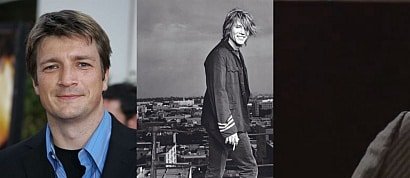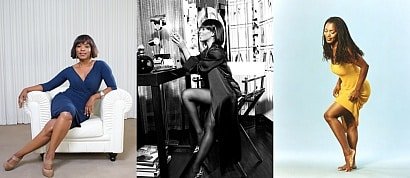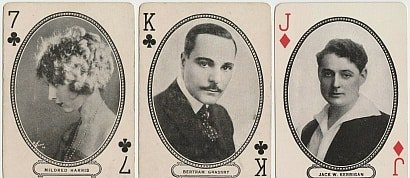William Wyler's The Best Years of Our Lives is a landmark post-WWII production. The collective Hollywood wisdom in 1945 was to halt the creation of movies with wartime themes. The movie-going public had just endured a steady 3-year diet of them - escapist combat movies, realistic thrillers, and melodramas concerning conditions on the Home Front were among the variety of war-related productions shoved through the distribution pipeline of Hollywood studios. Probably the most famous WWII-themed film welcomed during the early 1940s was the absolutely remarkable and truly unforgettable Casablanca. With quality such as this being exposed to the global public, there's little wonder why studios felt intimidated by the concept of producing more movies concerning the war-torn worldwide conditions. This prevailing attitude made producer Samuel Goldwyn and director William Wyler's commitment to the novel Glory for Me a commercial long shot.
Little did the studio or the production team realise that their cinematic rendering of MacKinlay Kantor's successful novel would capture the heart of the nation. Just as Casablanca struck a profound emotional nerve, many veterans saw The Best Years of Our Lives as a potent and poignant reflection of their post-war personal lives. The film is as meaningful, resonant and emotionally powerful today as it was over 6 decades ago. This alone is a tribute to its sheer greatness. It's a melancholy, intelligent, involving and admirably unsentimental masterpiece that set the crucial tone for films to follow in its wake. Wyler was determined to compose a statement that realistically portrayed the changed temperament of society. Consequently, he challenged both customary visual and storytelling conventions in this audacious accomplishment, overflowing with laudable cinematic merit.
The story is concentrates on the irretrievably altered lives of three World War II veterans. The war has reached its conclusion, and the soldiers are ready to return home. For years combat on the battlefield was all the soldiers knew. They looked forward to seeing their families again and settling into society. The survivors headed home - some carried physical scars such as amputated limbs, but all carried profound mental damage. They returned with the similar basic dream in mind of putting the war behind them and getting back to life as usual, but the reality was different. For those whose primary ability was handling a weapon, employment prospects were scant. Wives and children of survivors had become strangers. Marriages, occasionally initiated on an impulse prior to the man heading overseas, foundered. The Best Years of Our Lives exercises these factors (and others) to create a multi-faceted narrative. Even though the film's social significance has weakened, its dramatic power and bearing hasn't lessened.
Sergeant Al Stephenson (March), Air Force Captain Fred Derry (Andrews) and Navy grunt Homer Parrish (Russell) are three World War II veterans keen to return to their family and friends. The mixed reactions of the homecoming are perfectly captured: the nervousness and anticipation, the anxiety and excitement. They're all uncertain about the future that lies ahead.
Al returns to an influential and healthy-paying banking position. He returns to a family who are happy to have him back. He had forever dreamed of his homecoming over his 3-year war campaign, but the reality transpires somewhat differently. There's a noticeable distance between Al and his wife, and, despite their best efforts, they are unable to bridge it. Al soon begins to question the morality of the economic system that is refusing to help the very veterans who fought to keep the nation together.
Fred returns to a marriage that he hurriedly walked into before being shipped off. His wife Marie (Dayo) is ostensibly not quite as enamoured with him now that he's out of uniform. Fred finds himself unable to hold down a steady job, instead returning his old job as a soda jerk at the local pharmacy. Soon he finds new romance in Al's daughter Peggy (Wright).
The central two threads of the narrative concern Al and Fred, with another story concerning Homer in between. Homer returns to his family and high school sweetheart Wilma (O'Donnell). During the war Homer lost his hands and now has hooks as a replacement. Those around him find it difficult to adapt to his disability, leaving Homer dissatisfied in his heart. He's additionally unsure about Wilma's feelings towards him. Are they feelings of true love or sheer pity?
Director William Wyler was known as a perfectionist when it came to directing movies. Wyler sometimes used up to 20 or 30 takes just for one scene to ensure he received the best possible performances from his cast. The man knows how to direct. His dedication to perfectionism shines like the rising sun early in the morning. Every facet of the film is totally involving. From the meticulous sets, marvellous locations and the authentic, uncompromising snapshot of 1940s society - faults are too scarce to count.
The Best Years of Our Lives is a beautifully-framed movie filled with deep long shots and long takes. The cinematography was courtesy of Gregg Toland, whose credits also include Citizen Kane. Every shot is artistic and magnificent. It evinces an artistic tenacity as it moves from one sterling shot to the other. Wyler was recognised for his efforts and was rightfully awarded a Best Director Oscar. But Wyler's terrific direction wasn't the only recipient at the Oscars. Other Oscar wins included Best Film Editing, Best Writing, Best Music and a few more for the actors. The sound was additionally nominated, but didn't win. Actor Harold Russell won an honorary Oscar for "bringing hope and courage to fellow veterans". In real life, Russell was an amputee who had lost his arms and was forced to use hooks as a replacement. Russell also won an Oscar for Best Supporting Actor, making him the only person in history to win two Oscars for the same performance. The film also captured top honours at the British Academy Awards, the Golden Globes, and the New York Film Critics Circle Awards. Beloved by critics and audience alike, The Best Years of Our Lives was not only awarded with rave reviews but it also became the biggest box office success since Gone with the Wind.
When it comes to the acting department, there isn't a fault to be found. Myrna Loy received top billing as she was a massive box office draw in her era. Her performance is strong, solid and remarkable; giving her character just the right dosage of sardonic wit.
Veteran actor Fredric March places forth an outstanding performance as a man trying to get his life back together. He's strong, passionate and is wholly credible as a concerned father and a survivor of the war. March received an Oscar, and rightfully so. His long speech before a dinner party will forever remain memorable.
Dana Andrews is believable and likeable as Fred. He gives his character the right amount of charm and good looks.
Harold Russell, as I mentioned before, was given two Oscars for his performance. As an actual double amputee, he knew how a family reacts to a disability such as this. His work is credible and amazing here. In the scene where he confronts his fear that his girlfriend can no longer love him due to his disability, he's utterly heartbreaking.
Teresa Wright, Virginia Mayo and Cathy O'Donnell are the central women of the cast. Just like the males, faults are limited.
Overall, The Best Years of Our Lives is a sincere, morose character study of the difficulty of social re-adjustment for war veterans. The film runs at a whopping 170 minutes, yet it never feels that long. For its nearly 3-hour duration, this masterpiece is involving and compelling. However it must be said that at 170 minutes, some facets of the story are stretched out a little too excessively.
Technically, the film is very straightforward. No hyperboles, no glitter, so sweeping manipulation. There is never any need. The camera is plonked in front of characters that seem like real people with realistic problems. The lives, emotions and feelings of the characters are revealed with a sobering ring of truth. The final potent line in particular is a perfect way to conclude the proceedings. As Fred finds his new love, he embraces her and delivers a romantic kiss.
9.2/10
 Login
Login














